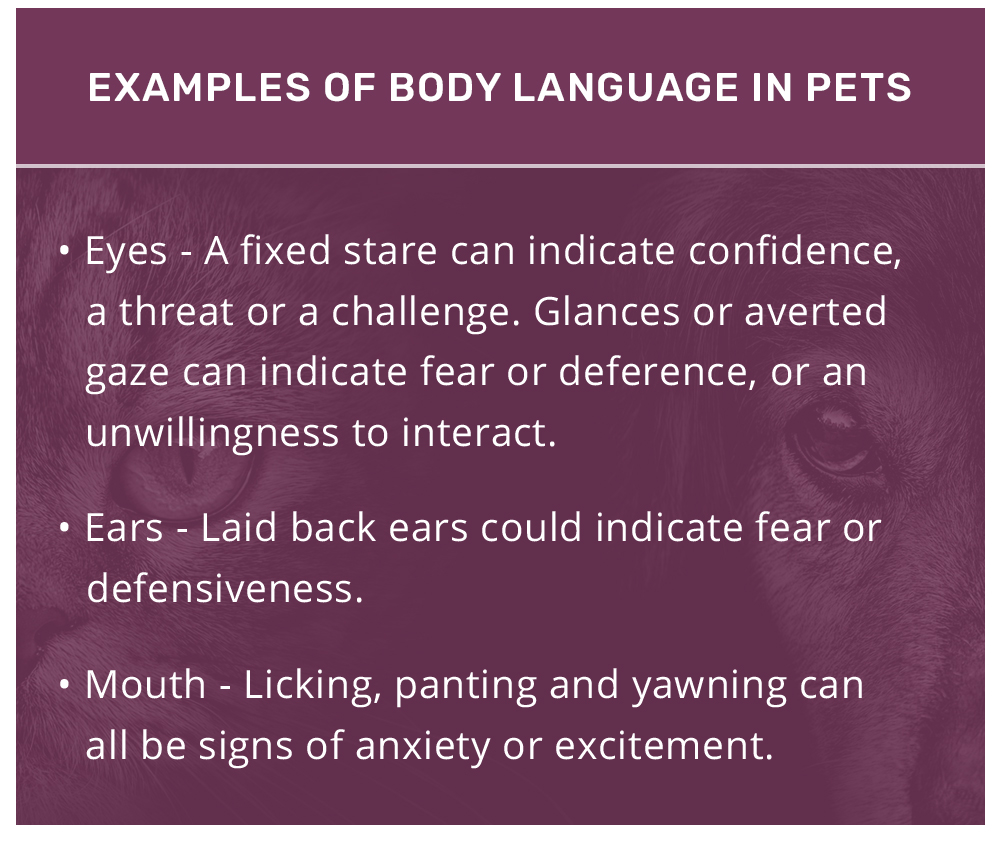Page19
Body Language
One of the primary means of communication from pets is through their body language. Pets will use all parts of their body to signal to other pets and to people. Remember, pets are not verbal and use the same communication techniques with us as they do with members of their own species. Below are some examples.


It’s important to note that signals can change very rapidly and the context of the interaction can affect the meaning of the signal. A yawning dog who is in a veterinary exam room is probably anxious – while a yawning dog at home in his bed is probably just tired.
Body language can be masked by anatomical differences. The wrinkles of the Shar Pei may hide cues that you would pick up on with a German Shepherd.
Lastly, our body language can influence their behavior as well. When we feel threatened we change the way we stand, our facial expression and even our respiratory rate. Animals can easily pick up on this and their behavior will change in reaction to our cues.

